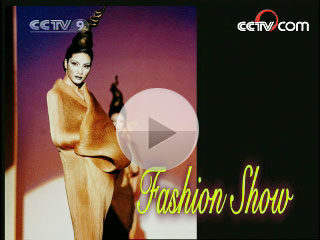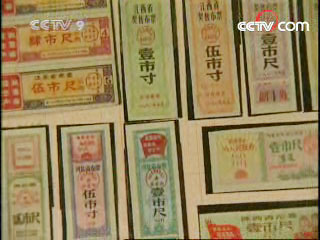------Program code: DO-080611-01045 (what's this?)
Source: CCTV.com
06-11-2008 08:08
The young woman in the picture is Chen Juanhong. The man crowning her is Tian Jiyun, Deputy Premier of the State Council of the People’s Republic of China.
 |
The contest was known as both the 2nd Models Contest of China and the World Supermodel Contest China Selection. There were 42 contestants, who came from various modelling troupes across the country. The winner would represent China in the World Supermodel Contest in the U.S. the following year. In the final on October the 29th, 1991, the hot favourite was Qu Ying. But to most people’s surprise, she only came second. The crown was awarded to Chen Juanhong, a relative newcomer who had only been modelling for a year.
 |
The contest took place ten years after modeling first started developing as an industry in China. One member of the jury was a French lady, a Ms. Gaspar. Twelve years earlier she had come with fashion designer Pierre Cardin to China as one of his models. At the time the Chinese people had never heard of such a thing as a fashion show.
In 1979, the early spring weather was cold in Beijing. People were still wearing their winter clothes – the styles were similar and the colours were only blue, grey and green.
In March 1979, French fashion designer Pierre Cardin visited the newly-opening China. He brought with him 12 models, who would put on a fashion show in Beijing.
The concept of a fashion show was entirely new to China. The government treated it with great caution. The fashion show was publicized as, for "internal appreciation", and the tickets were restricted to government officials and foreign trade and fashion professionals. The venue for the first fashion show in new China was Beijing's Cultural Palace of Nationalities.
Li Anding, a reporter with the Xinhua News Agency, was given a press pass to cover the fashion show. Afterwards, he began writing a report on the event, but he never got to finish it.
Officially, Pierre Cardin’s fashion shows were for “internal appreciation only” and “not suitable for publicity”. The authorities had laid down three rules for anyone who attended: First, they had to be investigated; second, they had to sit according to the seat number they were given and their names would be put on record; and third, they were not permitted to give away or sell their ticket.
Xu Wenyuan was a new product development worker at the Shanghai Fashion Company. She was one of those who got the opportunity to see the fashion show.
In 1979, China was shifting its focus from “building a socialist economy” to “reform and opening”. In a report at the time, the Economist magazine wrote that after 20 years of poverty, China’s various economic indices were beginning to show signs of dramatic growth. As evidence, it quoted some statistics for 1979: 334 million sacks, 850 million bulbs, 186,000 engines, and 1.3 million TV sets produced. In the case of TV sets, this was an increase of 157%.
